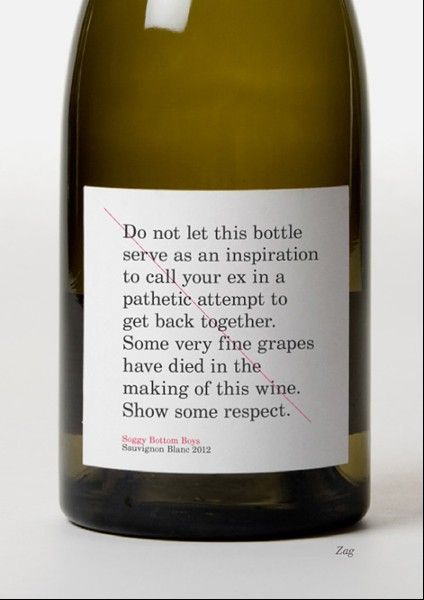
By Liz Doig, founder and creative director of Wordtree – and author of Brand Language: Tone of Voice the Wordtree Way®
Fifteen years ago, when I first formally started to do pieces of work that were called “tone of voice”, very few people – even in the brand agency I was part of at the time – knew what I was doing.
When I went to speak to clients about tone of voice back then, I had to explain why language mattered – and how it was possible (and more productive) to align it with brand and business imperatives. Even when I spoke to some agency account directors, I had to explain how tone of voice could add value – and should be sold to clients as more than a simple line item as part of an overall design package.
Slowly but surely, tone of voice began to be seen as a valuable brand asset in its own right.
Read more about what tone of voice is in our FAQs
And now, of course, everyone has heard of tone of voice. And every copywriter has a tone of voice section on their website.
But it’s clear to me that when the expression “tone of voice” is used – by clients, copywriters, design agencies and consultants… we’re rarely all talking about the same thing.
That’s why at Wordtree, we talk about three categories of tone of voice: Simple tone of voice, Team tone of voice and Organisation-wide tone of voice. The difference between the three isn’t in voice or personality – it’s more about the use the tone of voice has been designed for.
Simple tone of voice
I’m guessing most people who read this blog have seen design guidelines with 100+ pages on how to use logos, colour palettes, typefaces and design elements – and maybe two pages on tone of voice tucked at the back.
The words “friendly” and “quirky” often appear on these types of tone of voice guidelines – alongside a couple of very small examples.
As tone of voice guidelines go, they’re flimsy. But if they’re only ever going to be used by a couple of professional copywriters – and the only things they’re ever going to write are packaging and point of sale copy, then they can work.

Personally, I’d argue that “guidelines” like this aren’t really guidelines at all. They’re more of a handover note – or crib sheet – from one professional creative to another. As such, they don’t generally explain why or how the tone of voice aligns with the brand – and they tend only to show how to write in a very narrow set of light-hearted, celebratory circumstances.
Check out our blog: What’s missing from your tone of voice?
In my experience, the majority of copywriters and design agencies who describe themselves as “tone of voice experts” are talking about what we call simple tone of voice. They’re good at creating a nice voice for the back of a pack. They’re less good at explaining why the tone is a good fit for the brand and how the tone can be dialled up or down for different circumstances. In fact, this approach often doesn’t test whether it’s a good fit for the whole business. It simply works well on pack or on Facebook – and that’s good enough.
If you want a simple tone of voice from Wordtree, you will absolutely get something that’s brand-aligned. Over-engineered? Hmm, depends on your point of view. But the truth is, we think too systematically to do anything less.
Team tone of voice
This is how we describe a tone of voice that is designed to be used by a small group of copywriting or marketing professionals. To be useful to the group, it needs to have more comprehensive guidelines – and it needs to be based on thinking that is more aligned to the brand (which in turn should be aligned to business objectives).
The focus of a team tone of voice is firmly on external communications. They’re created to align with the brand. And they build in flexibility to talk about more serious subjects, as well as more light-hearted things.
A team tone of voice allows skilled, experienced communicators to write in a unified, brand-aligned voice – especially if they’ve had training to get it off the ground.
Organisation-wide tone of voice
This is something that Wordtree specialises in. It’s about getting your whole organisation to adopt a tone of voice that aligns precisely with – and is designed to help whole teams deliver – the organisation’s brand and business objectives.
Rather than thinking of an organisation-wide tone of voice as a one-off project, it’s helpful to think of it in terms of a programme. So it’s not a guideline plus a bit of training. It’s a cultural shift within your organisation that needs to be nurtured and sustained.
How you get from a tool for creating quirky back-of-pack copy to an approach that defines, disseminates and reinforces culture is interesting – and it’s all to do with how language influences the way we think. Fundamentally, if we have the language to frame an idea, then that frame also begins to influence the way we think.
So for example, a few years ago when same-sex partnership wasn’t afforded the same rights as heterosexual marriage, forms for everything from insurance to booking holidays would only give “him and her” options. This use of language doesn’t just discriminate – but it reinforces a belief that certain types of relationship are better and more acceptable than others. Language and belief are always intertwined. Which means a simple change of language can change the way people think. For example:
Your name:
Your spouse/partner’s name:
This tiny tweak in language does two things. 1) It changes the options available, and 2) It helps to reshape people’s thinking about who insurance and holiday bookings should be available to.
This is an important example, and it’s only a couple of words.
When an organisation changes its approach to language, it can use it as an opportunity to reshape the way it thinks culturally. So it can choose to have more inclusive language – like in the example. And it can choose higher levels of customer focus. In fact, it can choose to use language in any way – to shape both customer perceptions of its offer and the ways its teams think and act internally.
When tone of voice is used in this way, it becomes much more powerful and can be put to many more uses than simply making sure that back-of-pack copy is always written in the same chirpy tone.
To roll out an organisation-wide tone of voice, you need to prioritise language across the entire business. You need to establish ways of measuring the impact of language. And you need to factor tone of voice into processes like appraisal and monitoring. Tone of voice has to become part of business as usual, and be regularly monitored and refreshed.
We’ve carried out several organisation-wide tone of voice programmes – and they’ve resulted in better and more effective customer communications. They’ve also worked as a vehicle for instilling and galvanising brand-aligned culture. It’s particularly effective as a cultural tool a) because the training that starts the process off clearly explains the reasons why the brand is moving in a certain direction and how it is driving business results – and b) because language is something people use every day, it makes people evaluate regularly if their work is aligned to the brand and their company’s purpose.
So why does tone of voice sometimes fall flat?
A few years ago, we did some analysis of how and where tone of voice work came to us. The results confirmed a gut feeling that at least 50% of our tone of voice projects at that point had started life in the hands of another agency. At the time, we called these “rescue jobs”.
Typically, an organisation would ask us to train a tone of voice that someone else had created. “It’s just not working in all circumstances,” they’d say, and assume that training had been inadequate, rather than the tone of voice itself.
When we looked at the tone of voice in question, inevitably, it would be a simple tone of voice. Great to use for instructing an external professional copywriter to bash out some pack or point of sale copy – but absolutely useless when it came to writing a serious letter or dealing with anything complex.
So if you’re thinking that your organisation needs a tone of voice, we suggest running through a checklist.
- Are you an FMCG organisation that only needs packaging or light-hearted social media to read well? And will you only ever have professional writers working on these? Yes? A simple tone of voice could work for you.
- Are you an FMCG or any other kind of organisation that wants everything it writes to convey a core brand personality? Including its annual report, responses to complaints and internal comms? And will you mostly have professional writers and marketers creating these? Yes? Then a team tone of voice could be the answer.
- Are you a corporation? Do you work in a regulated industry? Or in B2B/professional services? Do you have multiple teams all communicating internally and externally? Do you have an in-house legal team? If you answer “yes” to any of these, you should start thinking about an organisation-wide tone of voice.
If you’d like to talk about your projects and ambitions – or if you have any questions – let’s have a call.
